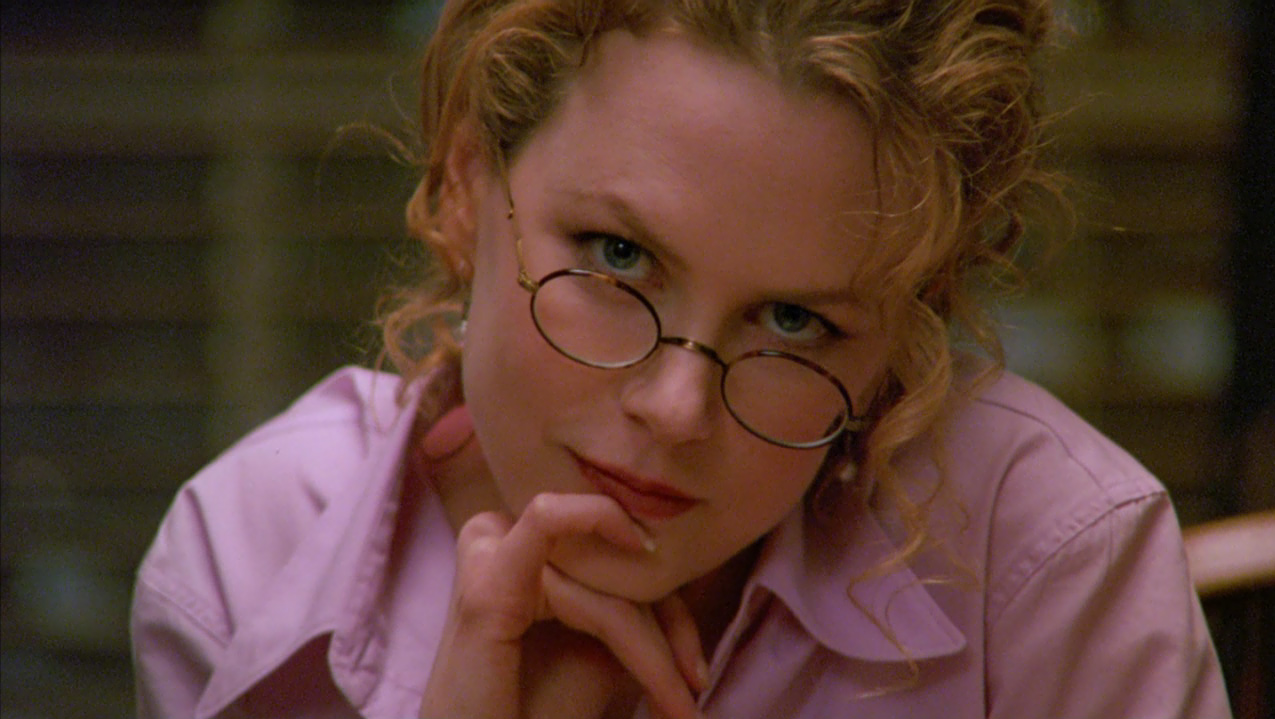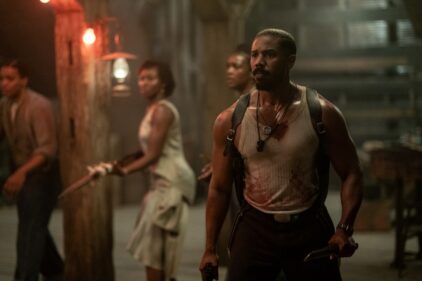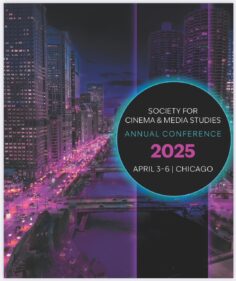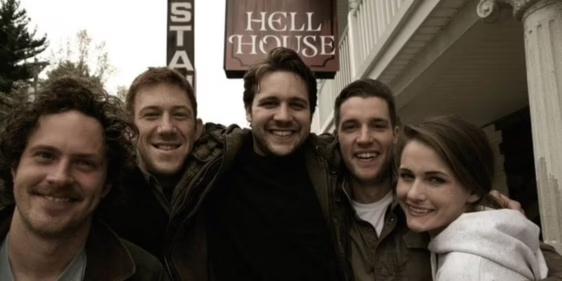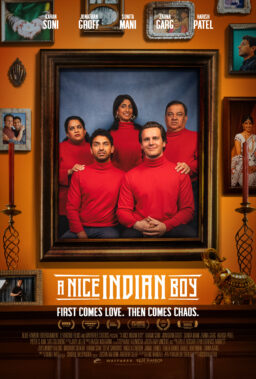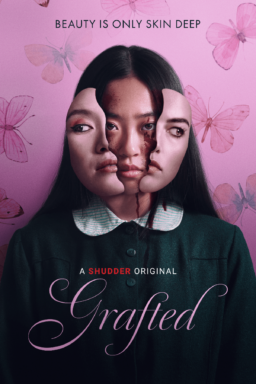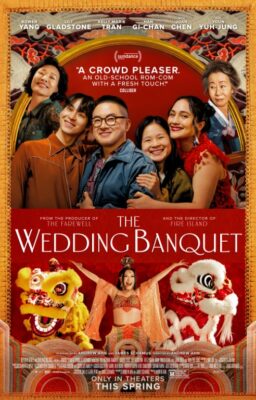Following the release of his groundbreaking dark comedy “Dr. Strangelove” in 1964, the subsequent films made by the late Stanley Kubrick would all undergo similar fates regarding their initial and ultimate critical receptions. Upon their initial releases, they would receive polarizing reviews critiquing everything from Kubrick’s formal approach to how failing to live up to critics’ expectations. With time, however, films that had initially received varying degrees of scorn and confusion would be celebrated as masterpieces, often by the very same people who dismissed them the first time around.
For example, take “The Shining“: When it first came out, there were complaints across the board about its deviations from the text, the over-the-top performances from Jack Nicholson and Shelley Duvall, and its slow pace. Nowadays, of course, it’s regularly considered one of the greatest horror movies ever made.
Therefore, it shouldn’t be surprising that Kubrick’s final film, “Eyes Wide Shut,” would receive a similarly chilly reception when it first hit theaters in July of 1999. Thanks to the combination of natural interest in Kubrick’s first film since 1987’s “Full Metal Jacket,” his sudden passing a few months earlier, the presence of Hollywood’s hottest couple at the time—the then-married Tom Cruise and Nicole Kidman—and an ad campaign that suggested a boundary-pushing erotic thriller beyond the likes of anything Hollywood had ever seen before, interest in the project could not have been higher. While it did get some good reviews here and there, it was largely dismissed by critics who found it pretentious, lugubriously paced, and, most of all, not sexy. As for audiences, they flocked to it during its opening weekend, only to discover that the film that they had been primed to see, one in which they would theoretically get to see two of filmdom’s most glamorous stars getting it on, was not the one that Kubrick gave them. They responded accordingly—the box-office receipts plummeted after a big opening weekend and the film received a “D-“ CinemaScore rating.
It’s now 25 years since the film’s debut and, perhaps inevitably, it has gone through its own period of critical reevaluation. What they’ve discovered (and what some of us have known from the start) is that “Eyes Wide Shut” is a film like no other—a strange, unsettling, and provocative exploration of marriage and sexual jealousy as defiant of expectations as anything that Kubrick ever made. It can also be seen as the culmination of an era in screen history: just before American cinema became almost entirely dominated by sequels, remakes, reimaginings and adaptations of comic books, here was a film that took its blockbuster-worthy elements and put them in service of an adult-oriented movie.

Like every film Kubrick made since “The Killing” (1956), “Eyes Wide Shut” was inspired by a previously published work, in this case, Austrian author Arthur Schnitzler’s 1926 novella “Traumnovelle,” also known as “Dream Story.” Kubrick first encountered the works of Schnitzler, who was celebrated for his controversial, psychologically-driven explorations of sexuality, and was particularly taken with “Traumnovelle” and its meditation on erotic ambiguities occurring within the context of a seemingly happy, stable, and comfortable marriage. He acquired the film rights to it in the late 1960s but was stymied by how to best approach it in cinematic terms, though he would always return to it while in between projects.
After years of trying to do it as a low-budget comedic exercise in sexual frustration—at various points contemplating such potential stars as Steve Martin, Albert Brooks, Woody Allen, and Bill Murray—it was finally revived in 1994 when he and screenwriter Frederic Raphael, whose script for the 1967 cult favorite “Two for the Road” also depicted a married couple dealing with strains in their relationship, reworked and expanded the story. They relocated the story and characters to contemporary New York and took a more serious approach. Urged by Warner Brothers to cast stars in the leads, he contemplated hiring Alec Baldwin and Kim Basinger in the main roles, but after meeting with Tom Cruise and Nicole Kidman, he awarded them the parts.
People thought that it was too slowly paced, that Kubrick’s recreations of New York City on a London soundstage were weirdly unconvincing, that the plot made precious little sense, that the sexual attitudes on display seemed wholly unrelated to contemporary concerns, and that Cruise and Kidman displayed little of the star chemistry that they were presumably hired to provide. Mostly, they wanted to see the gripping erotic thriller promised by the trailer and the incessant rumors that had sprung up over its extended production period. Kubrick could have easily given them a film more or less along those lines, which could have resulted in something brilliant. However, he was clearly after something much different than that. This constantly challenging work not only saw him defying the expectations of those hoping to see a sexy drama featuring two big stars as well as those of people who thought they were familiar enough with Kubrick and his work to see what he might do, only to be similarly hampered by the results.
This was a project that long consumed and intrigued him, even as other long-gestating projects like “Napoleon” and “A.I.” fell by the wayside after years of planning, and you can feel that in virtually every frame. Although pretty much all of Kubrick’s films, save for “Spartacus,” were “personal” in the sense that he more or less controlled them, his connection for the material here clearly went far deeper, in ways both obvious and discreet. The sense of ironic distance he frequently employed in his work is almost entirely absent here. As someone who was himself married three times during his life, Kubrick no doubt found himself mulling over the questions raised by the material regarding marriage, love, fidelity, and jealousy and saw Schnitzler’s narrative as an excellent method to wrestle with those notions.
His other films may have contained grand universal ideas that viewers worldwide could connect to. Still, the ones on display here are presented in an almost disconcertingly direct manner that may have rattled viewers like Alice’s revelations rattle Bill. (There are also numerous personal touches strewn throughout the film: Bill and Alice’s apartment was apparently based upon the New York apartment where Kubrick and his family lived before making a permanent move to England. There’s also the use of a clip from “Blume in Love,” a 1973 about sexual jealousy made by Paul Mazursky, an old friend of Kubrick’s who co-starred in his first film, “Fear and Desire.”)

As for the particular complaints regarding the film at the time, each has an answer, though some may require at least a second viewing to pick up on them. Yes, by all logical standards, “Eyes Wide Shut” doesn’t make a lot of sense, because Bill’s extended journey into the night and subsequent attempt to replicate his moves that make up its long central section do not adhere to any real logic. This goes especially for the incredible amount of activity that Bill can pack into what is already a late night. The answer, of course, is that pretty much all of it is meant to be a dream, which shouldn’t come as a surprise considering that the usual translation for the source book title is “Dream Novel.” Of course, claiming that something is all a dream is about the laziest narrative gambit, but in this particular case, it makes a lot of sense. It allows even the most seemingly mystifying elements of the film to fall into place.
But where does the dream/nightmare actually begin? The opening scenes, for example, are quite real in the way that they establish Bill as someone who constantly lives in the shadow of people with the kind of power and prestige that he quietly craves. Yes, he is a successful doctor, but only to a certain point—his initially impressive apartment pales in comparison to the lavishness of Ziegler’s residence (compare Bill and Alice’s cramped bathroom with the spacious lavatory where Bill brings Mandy back to consciousness). When we see Bill at work at his practice, we find that he shares it with another doctor. His discussion with Alice about fidelity, jealousy, and gender expectations may be fueled by almost ridiculously strong pot (somewhere out there, a resourceful pot grower/cinephile needs to create a strain called “Alice’s Recrimination”). Still, the feelings and resentments espoused by the two are achingly, bruisingly real. Kidman is, of course, an exemplary actress. Still, her work in this scene is arguably the single best bit of work that she has done to date—even though her screen time trails off considerably at this point, her presence looms over everything to come.
It’s at this point that Bill slides into a pot-induced dreamland kicked off when he’s summoned to his dying patient’s bedside. The unlikeliness of the time frame is no longer an issue, since dreams do not have to correspond to reality in this regard. At the same time, a number of the affectations Bill employs throughout—his habit of handing out a seemingly endless amount of cash during his nocturnal adventures without ever apparently hitting an ATM or the way he displays his medical identification card as a way to get in to anyplace he please—makes a lot more sense. These are the symbols of his position and authority, and in a dream state, they never run out or find themselves challenged. This also explains why the vision of New York we see during Bill’s journey never quite feels realistic. It’s as if it is a version created in somebody’s mind, and everything from newspaper headlines to store signs seems to be all but commenting on the unfolding action.
At the same time, Alice’s revelations about her sexual desires have shaken Bill’s confidence in both her and himself to such a degree that they wind up dominating and subliminally emasculating him at every turn. No matter how young and with it he may seem, as he reveals in his argument with Alice, he is not the most progressive of people when it comes to matters of sexuality—even when he finally gets a look at the orgy in action, it proves to be a curiously unerotic spectacle that looks more like a bizarre museum exhibit on The History of Kink.
The idea of his wife being someone with sexual thoughts of her own that don’t include him is such a distraction that they essentially undercut his reverie by throwing bizarre roadblocks at him every time he comes into contact with another woman who demonstrates even the slightest hint of desire towards him. In this regard, the decision to place CGI figures to block some of the more explicit imagery in the sequence to earn the commercially necessary “R” rating could have proven to be a clever bit of business—even in his mind, he is prevented from seeing “the good parts”—if it hadn’t been undone by clumsy execution.
(If Kubrick had not passed away during post-production, he would likely have fought tooth and nail to get the film released with an NC-17, which might have ended the long-standing commercial stigma towards that rating, or, barring that, would have made such additions/edits to the scene in a more artful manner than was done.)
Watching these scenes, it is easy to see why Kubrick first thought of doing this with actors more associated with comedy. The scenes in which Bill is thwarted work as a sly comedy of sexual frustration. But what makes them work so well, both as dark comedy and discomfiting drama, comes from Cruise’s genuinely inspired casting. Both before and after “Eyes Wide Shut,” Cruise has played glib heroic types who always get the job done, and while he has primarily eschewed films with heavy erotic content (save for this and the classic “Risky Business”), he almost always gets the girl in the end. So watching him constantly fail, combined with Cruise’s obvious discomfort at playing someone incapable of rising to the occasion, so to speak, adds a disconcerting edge to the proceedings. It’s pretty brilliant, leaving viewers with the same frustration as Bill at being the star of his extended sex fantasy and still not getting any when all is said and done.
Of course, all dreams must come to an end, and Bill, now confused and at wit’s end, demands an explanation for everything he has experienced to make sense of it all. It comes in the form of Ziegler, the man he yearns to be like one day and whom he has gone above and beyond for in the past in the hopes of one day rising to his level. Ziegler proceeds to lay out an explanation that covers everything that Bill has experienced while admonishing him on the potential dangers if he tries to probe what happened any further. It all sounds so convincing in the retelling—aided in no small part by Pollack’s mesmerizing delivery of this monologue—that it is only afterward, when we think back on it, that we realize that he hasn’t explained much of anything at all. His tale of orgies of the rich and powerful who will do anything to keep their secrets intact is essentially preposterous (although some of what he says may now ring uncomfortably true with some viewers in the wake of revelations about the late Jeffrey Epstein). Still, it is eventually enough to prod Bill out of his dream state and force him to face reality, especially in regard to his relationship with Alice.
This leads to the extraordinary final scene between Bill and Alice in the toy store, in which they genuinely communicate with each other for the very first time in what is, to be sure, a very long movie. The now chastened Bill apologizes to her. He asks her for advice—possibly for the first time—about how they should go about addressing the real and perhaps inevitable flaws in their seemingly picture-perfect marriage (which gains extra poignancy when you recall that Cruise and Kidman would themselves divorce less than two years after the film’s release).
It seems she is happy enough with this new attitude, claiming they are now both finally “awake,” but enough of a realist that when Bill claims that they will remain awake forever, she admits that such a concept frightens her. However, she does have an idea of how to begin their new period of being awake and attuned to each other. This leads to what I have already described as one of the great closing lines in cinema history—a single word that is hilarious and shocking in equal measure and the perfect one to close out both the film and, as would prove to be the case, Kubrick’s artistic legacy as a whole.
“Eyes Wide Shut” is a timeless and provocative work that forces viewers to interact with the ideas and conceits that it displays. Considering its challenging, uncompromising, and deeply personal approach, it’s unsurprising that it did not gel with viewers when it first came out. However, it has aged better than any other film from its era and feels as fresh and ambitious as ever—perhaps even more so in the increasingly timid cinematic times we live in. Whether you have never seen it before, wrote it off as a bizarre bore back in the day, or recognized its genius at the time, “Eyes Wide Shut” is an unforgettable work of art from one of the grand masters of the cinema—one utterly unlike anything he had done before. It will be seen, argued with and contemplated by anyone willing to take it seriously and embrace it on its own terms, as long as there are people around willing to see films as artistic expressions and not just IP extensions.
Oh yeah, it’s also a Christmas movie.

